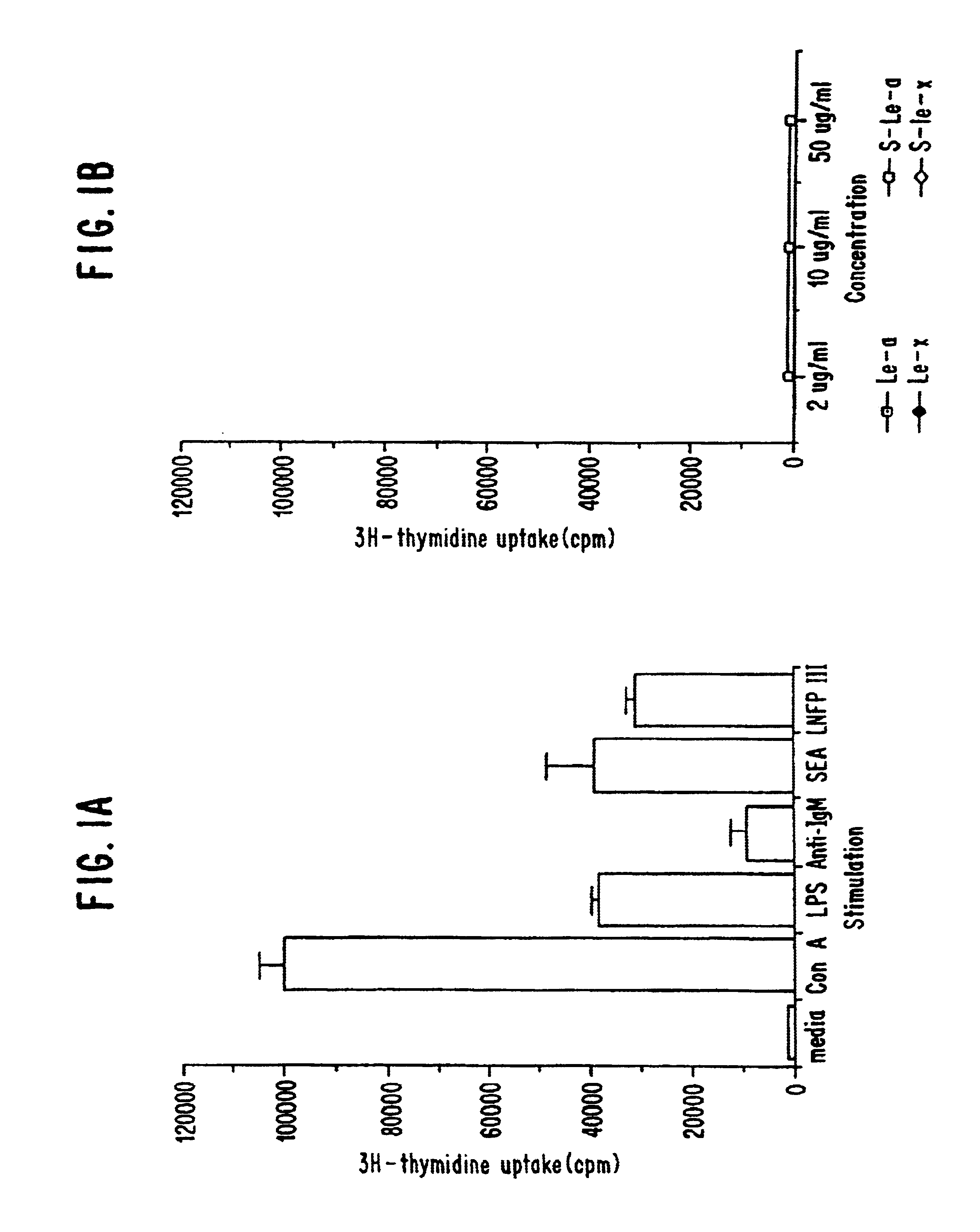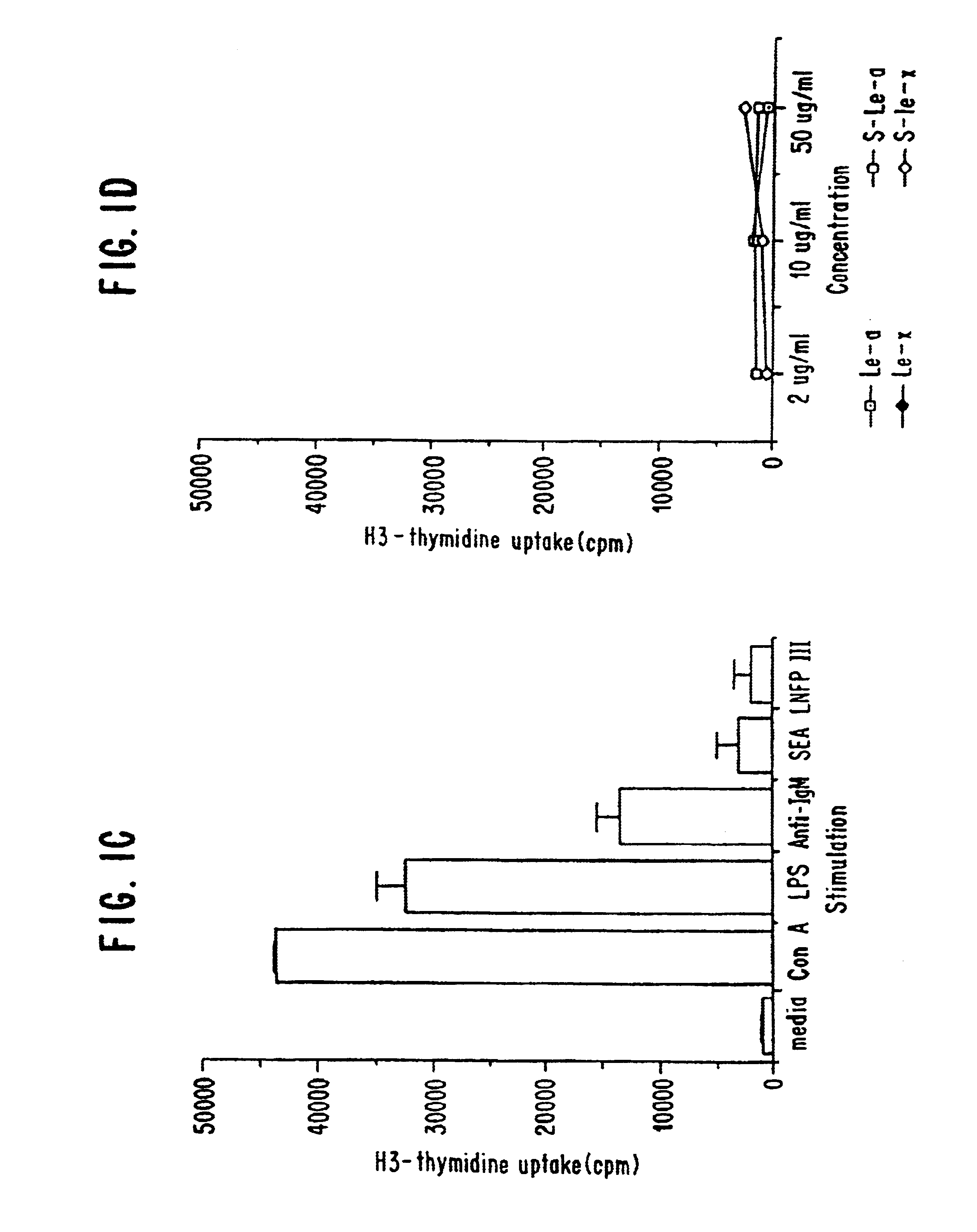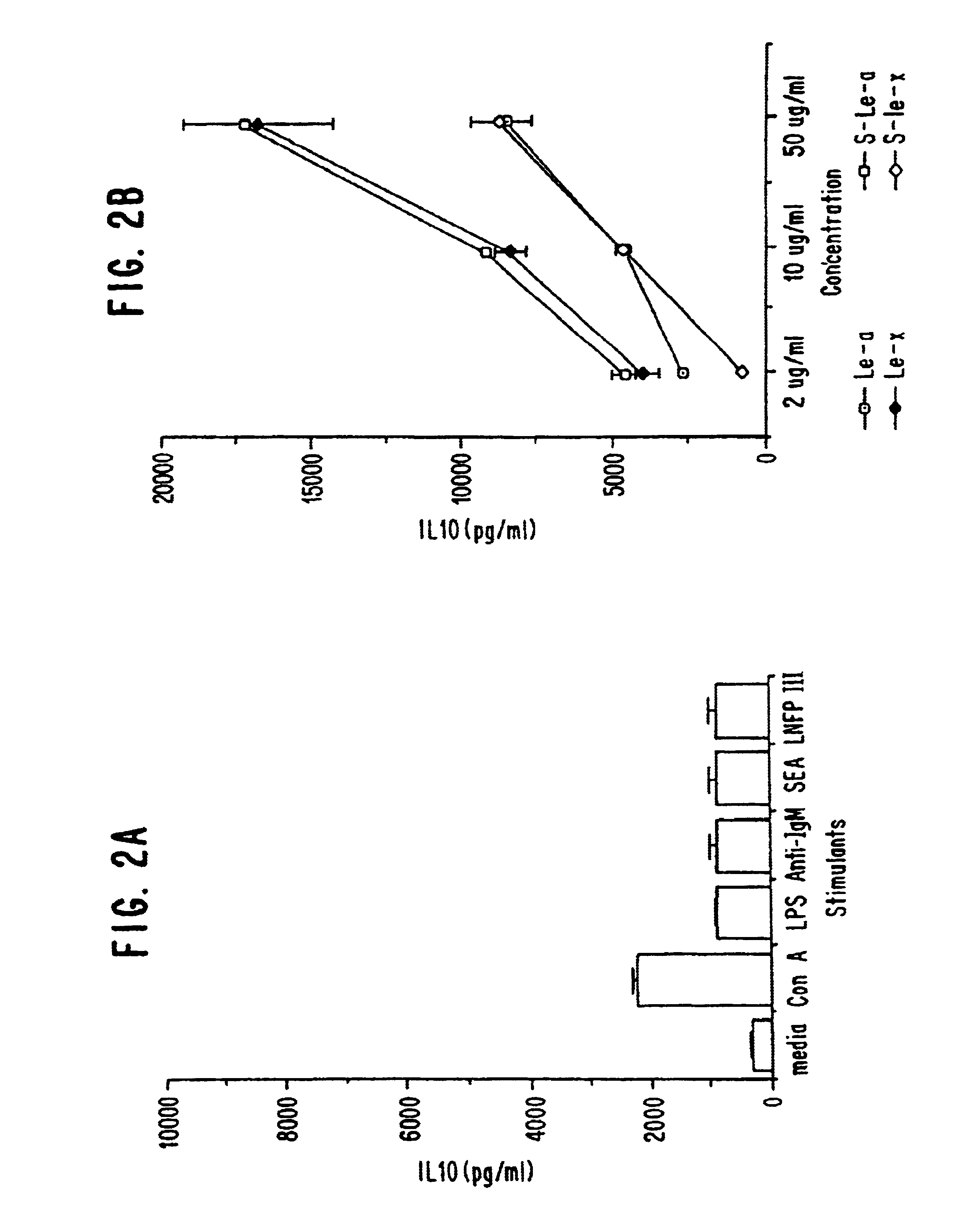Methods of inhibiting production of T helper type 2 cytokines in human immune cells
a technology of human immune cells and cytokines, which is applied in the field of inhibiting the production of t helper type 2 cytokines in human immune cells, can solve the problems of not demonstrating whether human immune cells (e.g., human immune cells in the absence of i>s. mansoni /i>infection) were responsive to lewis antigen-containing compounds, and not demonstrating whether cell types, such as il-4, could be stimulators,
- Summary
- Abstract
- Description
- Claims
- Application Information
AI Technical Summary
Benefits of technology
Problems solved by technology
Method used
Image
Examples
example 1
In this example, the ability of macrophages to produce IL-10 upon stimulation with various oligosaccharide conjugates was examined. Granuloma macrophages were prepared from C57BL / 6 mice as described in Flores Villanueva, P.O., et al. (1994) J. Immunol. 153:5190-5199 and Flores Villanueva, P. O., et al. (1994) J. Immunol. 152:1847-1855. Two million cells in 1 ml of DMEM, 10% FCS were incubated with either no stimulant (i.e., medium alone; a negative control), lipopolysaccharide (LPS; at 20 μg / ml; a positive control), schistosome egg antigen (SEA; at 10 μg / ml), various sugars conjugated to human serum albumin (at 100 μg / ml) or human serum albumin alone (HSA; at 100 μg / ml; a negative control). The sugar conjugates tested were lacto-N-fucopentaose III (LNFP-III), lacto-N-neotetraose (LNT) and Lewisy (Ley). The oligosaccharide conjugates were obtained from Accurate Chemicals, Westbury, N.Y.
At various time points (24, 48 and 72 hours), the level of IL-10 in the supernatant was determined ...
example 2
In this example, the ability of peripheral blood mononuclear cells (PBMCs) from humans suffering from various disorders to produce IL-10 upon stimulation with various oligosaccharide conjugates was examined. Human PBMCs were obtained from: 1) an individual who was allergic to pollen; 2) an individual suffering from lung carcinoma and 3) an individual suffering from colon carcinoma. One million PBMC in RPMI-1640 medium containing 10% human AB serum were incubated with either no stimulant (i.e., medium alone; a negative control), lipopolysaccharide (LPS; at 20 μg / ml; a positive control), various sugars conjugated to human serum albumin (at 100 μg / ml) or human serum albumin alone (HSA; at 100 μg / ml; a negative control). The sugar conjugates tested were lacto-N-fucopentaose I (LNFP-I), lacto-N-fucopentaose III (LNFP-III), lacto-N-neotetraose (LNT) and Lewisy (Ley).
After 24 hours, the level of IL-10 (in pg / ml) in the supernatant was determined by two-site ELISA as described by in Example...
example 3
In this example, the ability of peripheral blood mononuclear cells (PBMCs) from three humans with B lymphomas to produce IL-10 upon stimulation with various oligosaccharide conjugates was examined. One million PBMC in RPMI-1640 medium containing 10% human AB serum were incubated with either no stimulant (i.e., medium alone; a negative control), lipopolysaccharide (LPS; at 20 μg / ml; a positive control), various sugars conjugated to human serum albumin (at 100 μg / ml) or human serum albumin alone (HSA; at 100 μg / ml; a negative control). The sugarconjugates tested were lacto-N-fucopentaose I (LNFP-I), lacto-N-fucopentaose III (LNFP-III), lacto-N-neotetraose (LNT), Lewisy (Ley) and lacto-N-difucohexose I (LND).
After 24 hours, the level of IL-10 (in pg / ml) in the supernatant was determined by two-site ELISA as described by in Example 2. Additionally, cellular proliferation was measured by standard 3H-thymidine uptake at 90 hours.
The results are shown below in Table III.
TABLE IIIResponses ...
PUM
| Property | Measurement | Unit |
|---|---|---|
| Volume | aaaaa | aaaaa |
| Volume | aaaaa | aaaaa |
| Volume | aaaaa | aaaaa |
Abstract
Description
Claims
Application Information
 Login to View More
Login to View More - R&D
- Intellectual Property
- Life Sciences
- Materials
- Tech Scout
- Unparalleled Data Quality
- Higher Quality Content
- 60% Fewer Hallucinations
Browse by: Latest US Patents, China's latest patents, Technical Efficacy Thesaurus, Application Domain, Technology Topic, Popular Technical Reports.
© 2025 PatSnap. All rights reserved.Legal|Privacy policy|Modern Slavery Act Transparency Statement|Sitemap|About US| Contact US: help@patsnap.com



